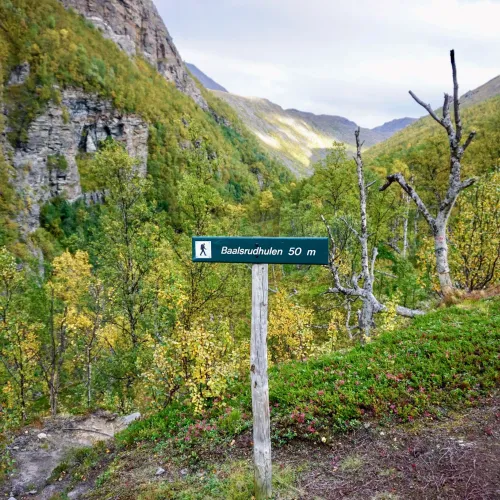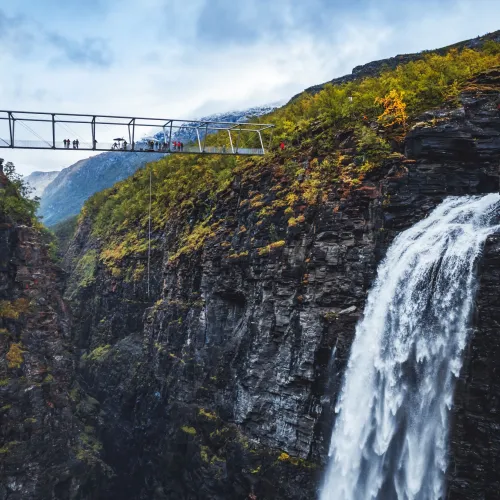Interested in both history and hiking? On these hikes you can learn more about the exciting history of the Lyngenfjord region. Many of the hikes have information boards along the trail which will tell you the story of our region and you can see remains from an earlier time.
The following hikes will give you an insight into the history of the Lyngenfjord region:
Many waterfalls and the nice terrain make this a wonderful hike. For those interested in World War II and war history, the area where the post box is placed will be of interest with many remnants of the German activity. More recent military history is also clearly visible in the Norddalen valley.
This was one of the places the well-known resistance fighter Jan Baalsrud hid during his escape from the Germans in World War II, en route from Rebbenesøy to Sweden. Along the trail you will also find sound installations with local history, sami place names and information signs
If you visit Spåkenes, you can experience the remnants of a German coastal fort from World War II and a wonderful view of the Lyngenfjord and the Lyngen Alps at the same time.
Årvikmarka in the Årvikdalen valley on the island of Arnøya is well developed for walking. This route is ideal for history enthusiasts. The path leads up the Årvikdalen valley to the old electric power plant. It was bombed by the Germans during World War II and is now in ruins.
The fantastic glacier Steindalsbreen in the Steindalen valley/Gievdanvággi is well worth visiting. The glacier and the valley are both regarded as geological treats – and it’s also worthwhile taking a closer look at the flora near the glacier. Along the path up to the glacier you can learn more about the geology and how the valley has changed during the years.
Walking the Bollmann road offers wonderful views of the Lyngenfjord and a unique insight into the local war history. In the summertime, it’s a perfect place to experience the Midnight Sun!
The Germans who invaded Norway during the war built several fortifications in the mountains surrounding the Lyngenfjord. The Bollmann road, which was part of the “Lyngen Line”, was built by prisoners of war. It’s now a hiking path where you can learn about one of the war memorials around the Lyngenfjord.
This is a spectacular and challenging hike for the more adventurous. It offers a wonderful view of the open sea, dramatic war history and quite a climb. The trail takes you past "Rotvåghula" (Rotvåg cave), used as a spy cave. A plaque has been erected by the cave in memory of the partisans who hid here while spying on the German shipping - in constant fear of being discovered.
This is a walk to the spectacular Gorsa Bridge, which crosses 153 m above the Sabetjohk Canyon. The canyon is among northern Europes deepest. If you hike via Ankerlia, you will pass the ruins from the mining industry which was in operation here until 1919. Signs will tell you more about the mining history of the area.
The trail at Tareneset, at the far north of the Lauksund, enables you to learn about the local nature and culture. The signs are only in Norwegian.
Hiking in the valley Moskodalen, you can see the remains of the mining operations here in the early 20th century. Mining took place from 1903-1907 and 1917-1918. The mine reopened in 1929 due to rising copper prices but closed for the final time in 1930.
Engnes in Skjervøy is a beautiful natural gem! This hike offers a wonderful view of the open sea, while the remnants of the German coastal fort will give you an insight into the history of World War II here.
This route is part of the Arctic Trail (Nordkalottleden) and in 2018 officially became a historic hiking route as the route offers magnificent nature-based experiences and is of important cultural heritage value.
Walking along the Olderdalen circuit, you will learn more about how the people of this valley lived in earlier times. Several information boards have been erected along the path.


























